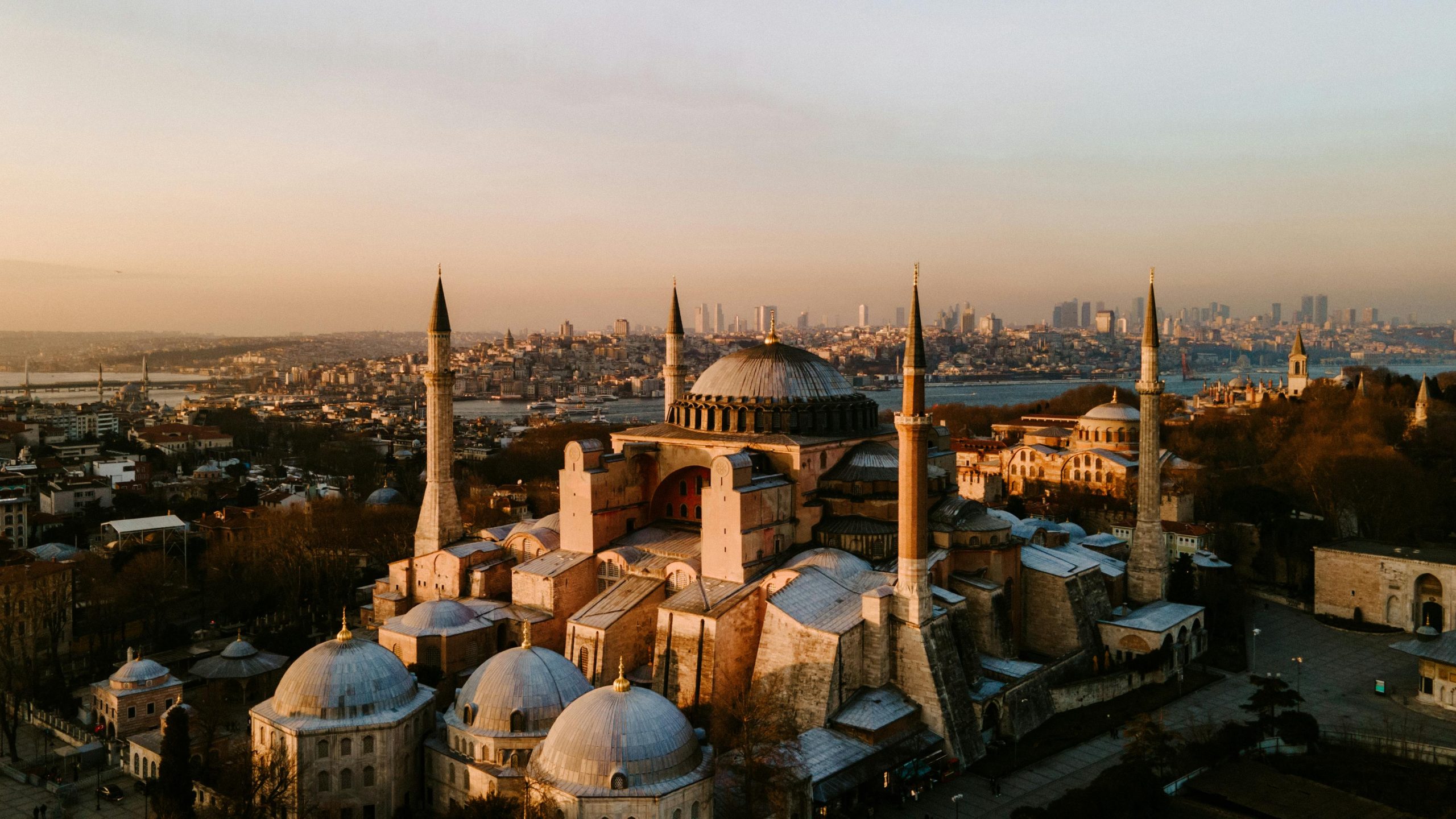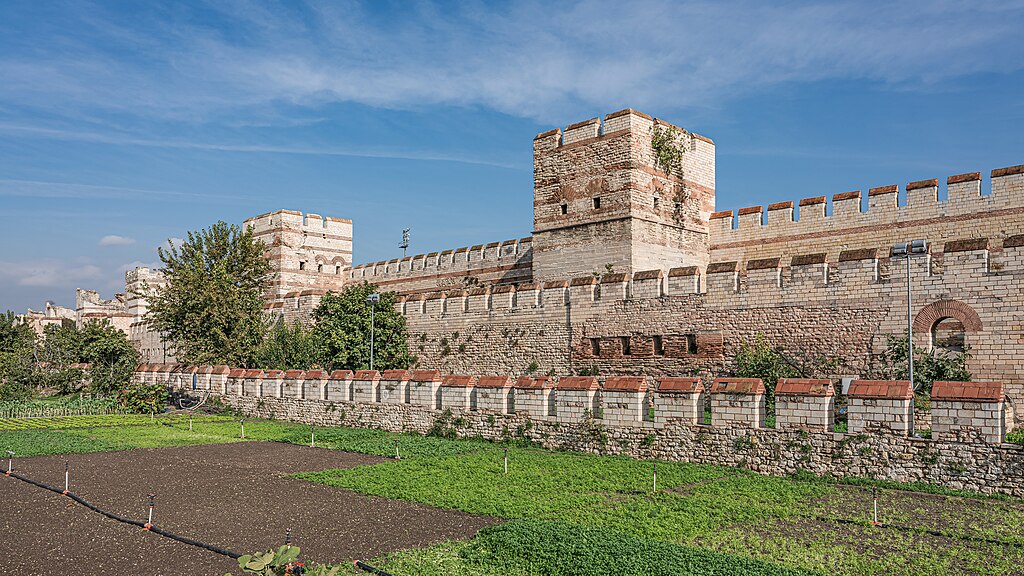Dolmabahçe Palace, Istanbul
Palace in Istanbul

Few places capture the splendor of Istanbul's imperial past quite like Dolmabahçe Palace. Stretching gracefully along the European shore of the Bosphorus, this 19th-century masterpiece replaced Topkapi Palace as the administrative heart of the Ottoman Empire. Built by Sultan Abdulmejid I, it reflects a fascinating blend of Baroque, Rococo, and Neoclassical styles — an unmistakable nod to Europe's influence on a rapidly modernizing empire. With its crystal chandeliers, grand staircases, and gold-leaf ceilings, the palace feels less like a royal residence and more like a dream frozen in marble. It's one of the top attractions in Istanbul for anyone who wants to see the moment the Ottoman world stepped into modernity.
Even from the outside, Dolmabahçe commands attention. The palace's waterfront façade — stretching over 600 meters — gleams in the sunlight, perfectly mirrored by the Bosphorus. Inside, it houses 285 rooms, 46 halls, and six Turkish baths, all filled with a mix of Ottoman craftsmanship and European luxury. This spot is one of the best places to see in Istanbul for those seeking to understand the twilight years of the Ottoman Empire and the aesthetic transformation that defined it. With its dramatic setting, ornate architecture, and deep historical resonance, Dolmabahçe is also a highlight of any walking tour of Istanbul, especially if you want to trace the evolution from sultanate to republic.
History and Significance of Dolmabahçe Palace
Before Dolmabahçe became a palace, it was literally a “filled garden” — the name translates to “filled-in garden,” as the site was once part of a small bay along the Bosphorus that was reclaimed from the sea. For centuries, it served as the location of imperial gardens and wooden pavilions used by the Ottoman court. In 1843, Sultan Abdulmejid I commissioned a new, grand palace to symbolize the empire's modernization and growing connection with Europe. Completed in 1856 under the guidance of Armenian architect Garabet Balyan and his son Nigoğayos, Dolmabahçe cost the equivalent of billions in today's currency and became a statement of imperial power and prestige.
Unlike the labyrinthine layout of Topkapi, Dolmabahçe follows a more symmetrical European plan, with formal halls, grand staircases, and richly decorated rooms. It was the main administrative center of the empire until its fall in 1922 and later became the residence of Mustafa Kemal Atatürk, founder of the Turkish Republic. Atatürk spent his final years here, and his deathbed — marked by a clock stopped at 9:05, the moment he passed on November 10, 1938 — remains one of the palace's most poignant sights.
Things to See and Do in Dolmabahçe Palace
Start your visit at the Ceremonial Hall, the most breathtaking space in the entire palace. Its centerpiece is the world's largest Bohemian crystal chandelier, weighing 4.5 tons and lit by 750 lamps — a gift from Queen Victoria herself. The gilded ceilings and hand-painted domes make it clear that this was a palace built to impress. Move on to the Crystal Staircase, an architectural marvel of glass balustrades, marble, and brass that sparkles under soft light.
The Harem, though smaller than Topkapi's, offers a more intimate glimpse into royal life. Its private apartments and salons reflect European influence while retaining traces of Ottoman domestic tradition. Don't miss the Medhal Hall with its intricate carpets and mirrors, and the Blue Hall, used for receiving important guests. The palace's museum section showcases royal portraits, fine porcelain, and Atatürk's personal belongings, providing a powerful bridge between empire and republic.
Step outside to the gardens and sea gate — where sultans once departed by imperial barge. The palace's waterfront terrace offers one of the most serene views of the Bosphorus, perfect for photos or simply absorbing the grandeur. Every detail, from the ornate gates to the finely carved marble fountains, adds to Dolmabahçe's aura of timeless splendor.
How to Get There
Dolmabahçe Palace is located in the Beşiktaş district, about a 10-minute tram or taxi ride from Sultanahmet. The easiest way to reach it is via the T1 tram line to Kabataş, followed by a short 5-minute walk along the waterfront. Visitors arriving by train can connect through Sirkeci railway station and transfer to the tram system. You can use the official TCDD Taşımacılık website to check schedules, compare routes, and purchase tickets for Turkey's national and regional trains operated by TCDD. For a more streamlined experience (especially if you prefer an English interface or want to compare across countries), we recommend using Omio, which allows you to easily compare prices, schedules, and book train tickets across Turkey and the rest of Europe — all in one place. Limited parking is available near Kabataş and Dolmabahçe Avenue, though it can be difficult to find space during peak hours. If you are looking to rent a car in Turkey I recommend having a look at Discover Cars, first, as they compare prices and review multiple car rental agencies for you.
Practical Tips on Visiting Dolmabahçe Palace
- Best time to visit Dolmabahçe Palace: Early morning for fewer crowds and softer light along the Bosphorus.
- Entrance fee in Euros: Around €20 (includes guided tour).
- Opening hours: Tuesday–Sunday, 9:00 AM–4:00 PM; closed Mondays.
- Official website: https://www.millisaraylar.gov.tr
- How long to spend: 2–3 hours to explore the palace and gardens.
- Accessibility: Wheelchair accessible on the ground floors; elevators available.
- Facilities: Restrooms, café, ticket office, and gift shop on-site.
- Photography tip: No photography inside the palace, but the exterior gates and gardens offer beautiful views.
- Guided tours: Required for entry; included with admission.
- Nearby food options: Cafés along Dolmabahçe Street and seaside restaurants in Beşiktaş.
Is Dolmabahçe Palace worth visiting?
Absolutely. Dolmabahçe Palace is one of the must-see places in Istanbul — a rare window into the city's transition from empire to modernity. Its dazzling interiors, rich history, and Bosphorus setting make it an unforgettable stop, whether you're exploring Istanbul's royal past or simply admiring its beauty.
FAQs for Visiting Dolmabahçe Palace
Can I explore the palace without a guide?
No, entry is only permitted with official guided tours included in the ticket price.
Is photography allowed inside?
Photography is prohibited inside, but allowed in the gardens and at the exterior gates.
How long does the full tour take?
Most guided tours last between 60 and 90 minutes.
Are there discounts for students or children?
Yes, reduced admission is available with valid ID.
Can I visit both the Harem and main palace on the same ticket?
Yes, though you may need to join separate tours for each section.
Nearby Attractions to Dolmabahçe Palace
- Taksim Square – The modern heart of Istanbul, just a short walk uphill, with shops and cafés.
- Galata Tower – A medieval stone tower offering panoramic views of the city and Bosphorus.
- Beşiktaş Fish Market – A lively local market and dining area near the palace.
- Kabataş Ferry Terminal – Gateway for scenic Bosphorus cruises and trips to the Asian side.
- Istanbul Naval Museum – A fascinating look at Ottoman maritime heritage, located next door.
The Dolmabahçe Palace appears in our Complete Guide to Visiting Istanbul!
This website uses affiliate links which may earn a commission at no additional cost to you!
Visiting Dolmabahçe Palace
Nearby Attractions
- Maiden’s Tower (2.0) km
Island and Tower in Istanbul - Fountain of Ahmed III (2.0) km
Fountain in Istanbul - Galata Tower (2.4) km
Tower in Istanbul - Topkapi Palace (3.2) km
Palace in Istanbul - Istanbul Archaeological Museum (3.2) km
Museum in Istanbul - Spice Bazaar (3.3) km
Bazaar in Istanbul - Rüstem Pasha Mosque (3.3) km
Mosque in Istanbul - Hagia Irene (3.4) km
Church and Museum in Istanbul - Sogukcesme Street (3.5) km
Street in no_link - Hagia Sophia (3.6) km
Cathedral and Mosque in Istanbul


